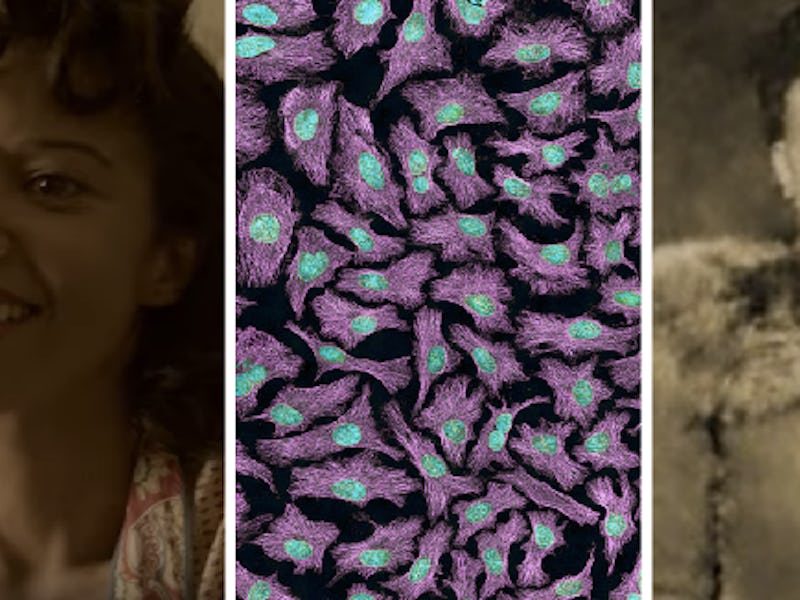The Science of Why Henrietta Lacks Is ‘Immortal’ In New Film

In 1951, Henrietta Lacks died of an extremely aggressive form of cervical cancer at John Hopkins Hospital. But before she died, cells were taken from her tumor during a diagnostic procedure and later, without her or her family’s consent, isolated and multiplied by researcher Dr. George Otto. Lack’s cells, named HeLa, became the first cells to live outside the human body and subsequently were the reason why decades of medical breakthroughs were able to happen. This story and the controversy behind the use of her cells is the basis of the upcoming HBO movie The Immortal Life Of Henrietta Lacks, which was teased in a new trailer released Wednesday.
Starring Tony-award winning Renée Elise Goldsberry as Lacks and entertainment titan Oprah Winfrey as her daughter Deborah Lacks, the film appears to cut between Lack’s life and that of her family’s while they cope with the knowledge of what happen to their mother’s cells. Rose Byrne enacts the role of author Rebecca Skloot, who is working with the family to write her book, The Immortal Life of Henrietta Lacks.
The ability of Lack’s cells to survive outside of her body is at the crux of why HeLa became the most important set of cells in science. To this day, researchers don’t know why her cells were particularly able to live and reproduce, theorizing it may be connected to the intensity of her tumor.
With her cells, Otto created the first immortal human cell line — the cell culture of a single type of cell that can replicate infinitely. Since this first experiment, her cells have been reproduced hundreds of times: According to The Guardian if you wrapped every HeLa cell ever created they would wrap around the Earth three times.
Cells that can live outside of the body are important to researchers because that means they can use the cells to test how they’ll react to particular conditions and environments that they can’t test on living humans. Lack’s cells have exposed to hundreds of diseases, untested substances, and have even been sent into space during a 1967 experiment on cosmic radiation. And subsequently, the use of HeLa cells enabled medical milestones like the polio vaccine, cloning, chemotherapy, and in vitro fertilization. Today her cells are still an integral part of cancer and AIDS research.
HeLa cells stained to show DNA in blue.
Her cells have also generated billions of dollars for pharmaceutical companies and biotech companies that sell a vial of HeLas for about $260 a pop. Meanwhile her family, who only learned that Lack’s cells were being used this way in the 1970’s, have received no compensation for their matriarch’s unknowing donation. The new HBO film touches on the Lack’s family struggle to receive recognition and retribution from these companies, John Hopkins University, and the National Institutes of Health.
The Immortal Life of Henrietta Lacks premieres April 22 on HBO at 8 pm EST.